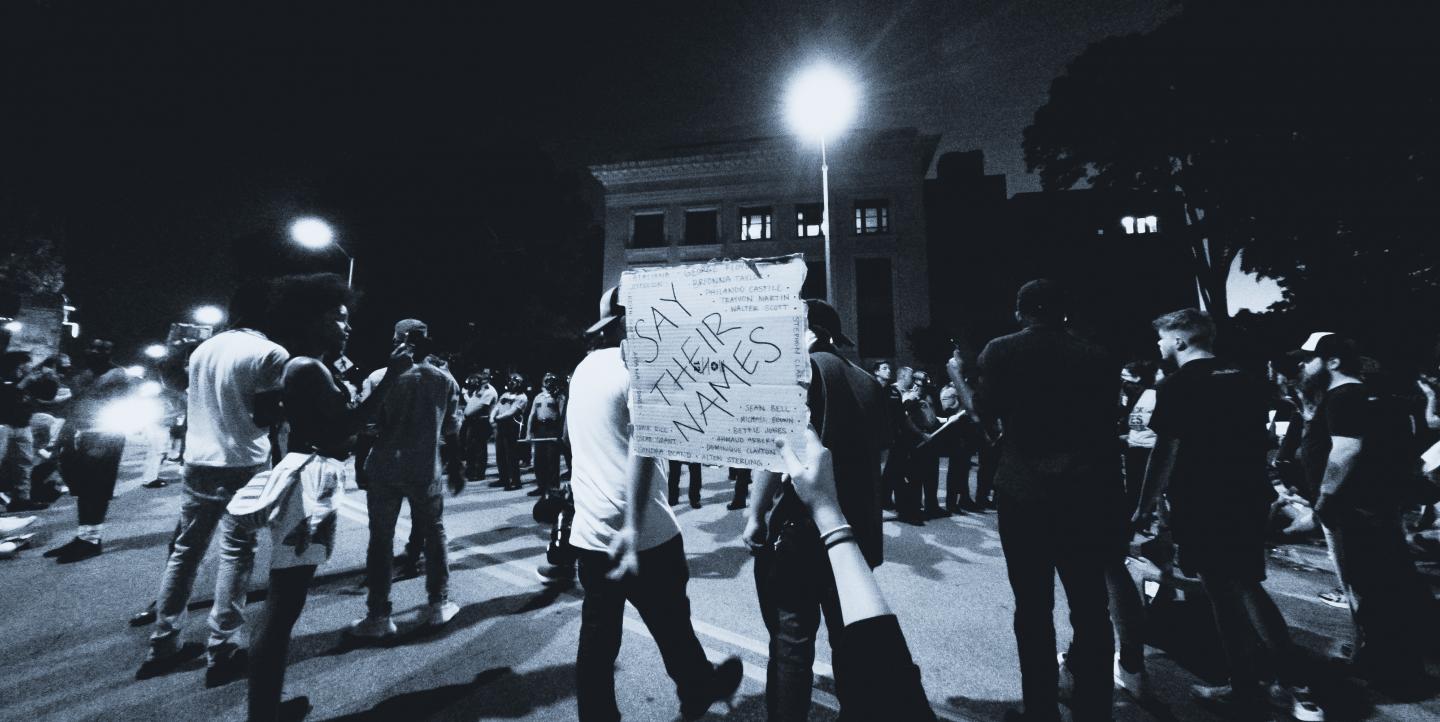In partnership with our parent organization, the International Center for Journalists (ICFJ), IJNet is connecting journalists with health experts and newsroom leaders through a webinar series on COVID-19. The series is part of the ICFJ Global Health Crisis Reporting Forum.
The murder of George Floyd last May brought millions of protesters in the U.S. out into the streets — just as people were acclimating to the COVID-19 pandemic.
The convergence of the racial justice movement with the ongoing global health crisis generated challenging working conditions for reporters. The personal nature of the racial unrest compounded these challenges for journalists of color, in particular. “As Black people, we’re battling two pandemics — we're battling racism and we're battling COVID-19,” said journalist, filmmaker and freelance photographer Cydney Tucker during an ICFJ Global Health Crisis Reporting Forum webinar in December.
Tucker reported on the Black Lives Matter protests in Atlanta over the summer for Al Jazeera. She captured an image at the time of a father holding his young son at a protest in one of her photos. This image especially resonated with her. “I thought it was so powerful that a father would bring his son to this protest this young, and let him see what was going on, the reality of the matter,” said Tucker. “Because at the end of the day, you can't escape who you are. You can't escape being Black. It's who you are. You're born into it. The younger that people learn, the safer you are in this country.”
With help from an IWMF fund supporting the mental health of Black journalists, Tucker attended therapy to help process what she witnessed during Black Lives Matter protests in Atlanta. Today, she is freelance reporting and producing a documentary for The New York Times which will air on FX and Hulu.
Below are key quotes from Tucker’s discussion with ICFJ Director of Community Engagement Stella Roque about reporting remotely, ensuring diversity and representation in her work, and staying safe while covering the protests during a pandemic.
On how journalists can produce multimedia work remotely during the pandemic
- Essentially, there is a lot of planning. I think it makes you a stronger producer because, in a lot of ways, you have to over-plan just in case things fall through.
- There’s a service called Storyful which has a bunch of user-generated content. In comparison to when I worked at NBC and I had to physically clear things myself and reach out to the person like “Can we use this in this piece? Are you okay with that?” They do all of that on their side. That takes a lot of the burden off the individual.
[Read more: Tips for reporting on anti-police violence protests in the U.S.]
On how producers can find talent locally, and from underrepresented communities
- When we’re talking about the communities that are predominantly impacted by COVID-19, we’re talking about Black and Latinx people of color, communities of color. Ideally, [you’re] establishing trust. It’d be nice if you had people who are from those communities covering those communities – people who know those communities inside and out.
- When I was going out, all I was seeing were white male photographers, and all they were wanting to capture were these super hyper stereotypical images of what they conceptualize as this movement of Black people — you know, the fist in the air or someone trying to throw something…We need to ask Black and brown photographers to capture their own communities because, at the end of the day, they're going to be the ones to get in there, get the shots and have people feel comfortable around them.
- There’s a bunch of different resources like Storyhunter, but do your research. A lot of people like to take the easy way out and just go with who they know. But depending on the state that you're in, depending on the country that you're in, there are groups of Black and brown cinematographers...People like to act like they don't exist, they like to take the easy way out and be like “they just don't exist, we can't find them.” But that's not real.
[Read more: How to promote diversity in coverage and in the newsroom]
On the importance of covering the Black Lives Matter protests, and staying safe while reporting on them
- The Black Lives Matter protests were very important. It’s something that, I don’t want to say that I was on the wrong side of history and that I didn’t cover, when it’s one of the pivotal points in our generation’s history. I wanted to be on the front lines of that.
- You need to do your research to find out how the police in your community address use of force. Some police are more likely to use rubber bullets. Some police are more likely to use tear gas. You have to find out what is distinct or unique to the area that you're going to be in.
- I wrote on my arm the name of legal representation, and also my emergency contact because [the police] were taking people's phones and you weren't able to make phone calls with your personal cell phones.
Lydia Antonio-Vila is a program consultant at ICFJ.
Photo by Kelly Lacy from Pexels.
This interview was condensed for clarity.

